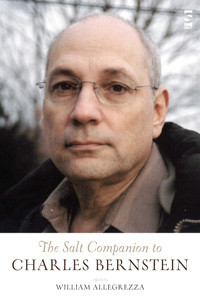 |
| Sarah Riggs (c)UPEC/Nicolas Darphin |
Sarah Riggs, from texts
of Alan Halsey, Pascal Poyet, and Lisa Robertson
When the writer’s ‘I’
only appears alphabetically, what we have is a revolution. For what is implicit
in this choice of structure is an acceptance of how the text exceeds the
control of the indivudual. There is an
excess of motion beyond what a text declares to know. The words go into
orbit. The letter « I » will
come around again, by dint of the text’s alphabetic circulation, whether the
writer is there or not.
The text, in the case of
Alan Halsey’s «Towards an Index of Shelley’s Death » as announced in Revolution : A Reader, edited and
reread-by-marginalia by Lisa Robertson and Matthew Stadler, is a variorum composed
of various accounts of Shelley’s
« ending », including Trelawaney’s, Mary Shelley’s and Byron’s. It is
necessarily plural in its sources, and plural in its directionality. Its
relationship to ending is one of continuing, of ever-shifting.
Who is it who writes,
when the I comes around, in « Towards an Index of Shelley’s Death »
(are the answers important ? why have you even asked the question ?) ?
I am but as the shade of her
I dreaded not the tempest
I float down
Imageless
Intertranspicuous
Into a sea profound
Invulnerable nothings
The authors of a
revolution are readers. Revolution=a
reader. Alan Halsey is a reader of multiple
accounts that filter through him. In
this sense he is as a medium. He writes (is it he ?) : « The
teller is bound to the endless repetition of an evershifting story. »
In her currently
unpublished Cinema of the Present,
Lisa Robertson’s text reads :
You became strange, you
became my eyes.
I put my studies at your disposition.
You see small mammals
fighting in trees.
I see it on your face.
Periodically a building
will produce an exoskeleton of great vulnerability.
I see it on your face.
Is this the surface where
expression converts to love ?
I, Byronic, you said, fucked my way forward.
You were reading the city
wrecklessly.
The writing surface might
as well be water, for all that it is solid, who is « I » and who is
« you. » The text is
structured in one part, and not stubbornly consistently alphabetically, and
repeatingly, interspliced with lines. The lines of a conversation ? Must the questions be so two-dimensional when
the conversations are deeply dialogic ?
Stars and sun and moon look to each other differently from each angle,
at the various moments of revolution.
Then there
are lists. Sometimes, often, of three. Pascal Poyet finds them in Cinema of the Present, clusters them
together, into a present which is its own index. An index to a revolving book. Some, many,
most, of the clusters are his. Some are hers : « University, swimming
pool, botanical park .»
The list is like the
alphabet in that it equalizes, and renders liquid, the playing field. Renders plural. Each word resounds so particularly, is
particulate, there is no reckless accumulation.
« I, Byronic, you » Indeed we are fucked, and also in the most literal,
pleasurable way. A moving forward is a
moving backward and around, in and out. A marginal note by LR to
« Shelley’s Death » (by Edward John Trelawney, from « Records of
Shelley, Byron, and the Author ») reads :
The corpse evades identity ; only
its remnant accessories assist the
ritual of identification. The
24-year-
old Keats, whose book helped to
confirm Shelley’s identity, had died a
year earlier of consumption in Rome ;
first he had chosen his own epitaph :
« Here lies One Whose Name is writ
in Water. » The statement is usually
interpreted as an avowal of Keats’s
extreme bitterness over his lack of
recognition as a poet ; Shelley himself
believed that vicious criticism caused
the turn in Keats’s illness that quickly
lead to his death. But for me the epi-
taph points to Davenport’s time-like
sea again—the indifferent inevitabil-
ity of the dissolution of self. Reading
it I feel a relief.
Reading the dissolution
of self as relief. How were they able to identify Shelley’s body, wrecked as it
was by a literally watery dissolution ?
(Always this wish to identify, to pin down ?) In evidence, a volume of Keats’ poems opened
in the corpse’s breast pocket. Somewhere the revolution/reader tells us, I
can’t remember where or who. There is a constellation of texts, three of them,
I won’t list them for you, in this book
(revolution) which is not meant to circulate by the accustomed means,
relating to Shelley’s dissolution.
Whether it was Shelley’s
heart or liver which survived the ocean-side cremation. LR delights in the
liver. Whatever organ it was, so the text goes, Mary Shelley wrapped it in
Shelley’s poetry and kept it in her desk.
The body of the text is
inscrutable. No « eye » sees retinally ; no one « I »
can be identified. Yes. This is a relief.
With thanks to Vincent Broqua and Olivier Brossard.
 |
| Detail from L. E. Fournier's Funeral of Shelley, 1889 |




















